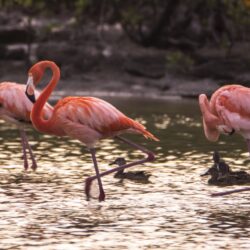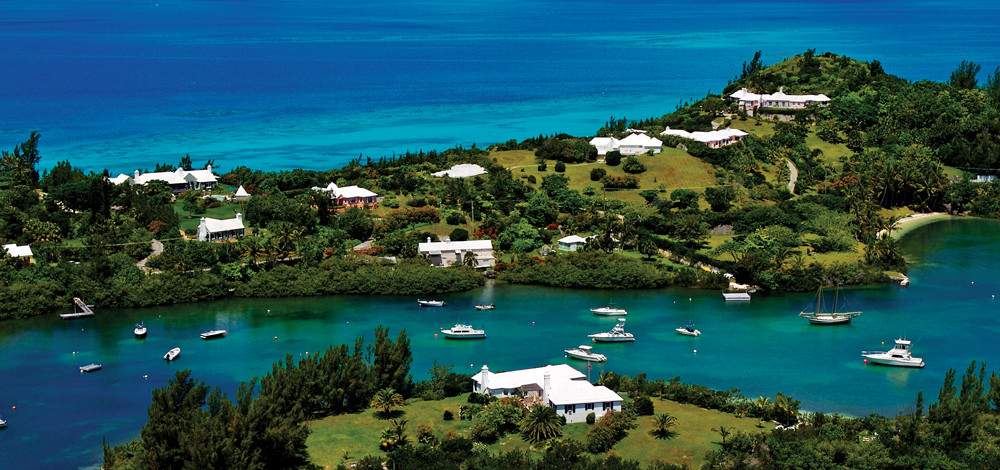Discovering the UK Overseas Territories – Biodiversity
The Overseas Territories are home to some of the UK’s most extraordinary biodiversity. It is estimated that more than 1,500 endemic species of plants and animals are found in the Overseas Territories, including a quarter of the world’s penguins, one third of the global population of albatross, and the largest coral atoll on earth. It therefore comes as no surprise that over 90% of the UK’s biodiversity is actually found in its Overseas Territories. The Overseas Territories are committed to protecting and enhancing this significant and precious biodiversity for the benefit of the entire world.
However, the Overseas Territories’ biodiversity is particularly vulnerable and faces pressure from many sources, such as invasive species, habitat loss and climate change. Some of the endemic species are included on the IUCN’s Red List of threatened species.
The Falkland Islands are home to a rich and significant amount of biodiversity, including 220 species of birds. This includes five species of penguin totalling over 1 million breeding pairs, three endemic bird species and 70% of the world’s black-browed albatross. There are 24 marine mammal species that have been sighted in Falklands waters, including the southern elephant seal, the southern sea lion, and sub-Antarctic fur seal. In addition, the Falkland Islands are formally recognised as a key biodiversity area for the endangered sei whale.
Ascension’s endemic pseudoscorpions have evolved to become “giants.” They are the largest in the world and have adapted to fill the ecological roles of larger animals that are naturally absent from isolated islands. They still only measure 1.5cm.
The size of Saint Helena is a third of the Isle of Wight, however it is home to a third of all of the endemic biodiversity found in the UK and its Overseas Territories. This total of 500 species of plants and animals includes Saint Helena’s best-known bird, the Saint Helena Plover (known locally as the ‘Wirebird’), which is the national bird and is featured on the Saint Helena coat of arms.
Saint Helena is home to Jonathan the tortoise. Jonathan is a Seychelles giant tortoise, and at 190 years old, he is the wold’s oldest living land animal!
The Tristan da Cunha archipelago is a globally important area for birds, home to 86 native species and 11 that are found nowhere else. These include the endangered Tristan Albatross, the Inaccessible Rail (which is the world’s smallest flightless bird), and the rarest ‘British’ bird, the Wilkins’s bunting. In recognition of this remarkable environment, two of the islands form a UNESCO World Heritage Site.
Bermuda’s marine and terrestrial biodiversity includes over 8,000 plant and animal species, 3% of which are endemic to the Overseas Territory, including cahows, rock lizards (skinks), longtails and spiny lobsters, while cedar and palmetto trees populate the island’s nature reserves. The people of Bermuda consider its biodiversity as critical to their well-being; it also serves as an important barometer of climate-driven global trends.
Despite thousands of Caribbean Flamingos populating the salt ponds of Anegada in the British Virgin Islands, they were hunted to extinction throughout the 19th and early 20th centuries. However, after a kind donation from fellow Overseas Territory Bermuda, the species has been reintroduced.
Cayman’s number of documented native species is more than 3,000, however this figure continues to grow as new records, and species new to science, are identified. In 2022, the Grand Cayman Blue Iguana numbered between 10 and 25 and was considered functionally extinct. An ambitious and concerted conservation programme, demonstrating the Cayman Islands’ commitment to protecting biodiversity, has managed to rebound the population, however despite these efforts the Blue Iguana remains an endangered species.
The Turks and Caicos Islands are also home to an iguana, the Rock Iguana. Its habitat is found on Little Water Cay, an island under 0.5km² in size and located northeast of Providenciales. Endemic to the Turks and Caicos Islands, the Rock Iguana is endangered with a population of roughly 3,000.
Gibraltar is an important site for biodiversity conservation due to its unique location and habitat. Famously (or infamously!) Gibraltar is home to the Barbary Macaques, the only wild primate found in Europe. In addition, the Territory is a hotbed for bird migration and over 600 plant species can be found on the Rock, three of which are endemic.
South Georgia is home to 95% of the world’s Antarctic fur seals.
The governments of the Overseas Territories devote significant resources to protecting their biodiversity, but much of the work requires external expertise and funding. The UK Government supports environmental management and climate change mitigation in the Overseas Territories through the Darwin Plus Fund.
In March 2022, the UK Government announced a significant uplift to the Darwin Plus programme for biodiversity and conservation projects in the Overseas Territories. The uplift was secured for the purposes of improving and expanding Darwin Plus to better meet the needs and priorities of the Territories.
The Department for the Environment, Food, and Rural Affairs (DEFA) has committed to make available £10 million each year until 2025 for applications to Darwin Plus. As of April 2023, the Darwin Plus programme has been expanded to include four grant schemes:
- Darwin Plus Strategic: for large-scale, ambitious projects, capable of driving transformative results for biodiversity in and between territories. Funding is for projects between £1 million -£3 million, lasting 3-5 years (launched in May 2023).
- Darwin Plus Main: DEFRA’s original funding, now in its twelfth round of funding, for biodiversity projects up to £1 million.
- Darwin Plus Fellowships: also, in its twelfth round of funding, offering support for Overseas Territory nationals (or those with a relationship to an Overseas Territory) to increase their knowledge and ability to meet long-term strategic outcomes for their natural environment.
- Darwin Plus Local: aimed at small-scale environmental projects, for building capacity in-territory and contributing to local economies. Launched in January 2023, this scheme remains open to individuals (for projects up to a value of £20,000 and organisations (for projects up to value of £50,000).
The UK Government also provides funding for environmental projects in the Overseas Territories through the CSSF’s Environmental Sustainability and Climate Change Programme.
The UK’s Blue Belt Programme supports Territories to enhance marine protection and sustainable management; the Programme has been funded by over £35 million since it began in 2016.
Whilst this is welcome, it does not come close to replacing funding streams that the Overseas Territories can now no longer access, following the UK’s withdrawal from the European Union. BEST, for example, was a fund specifically designed to support the conservation of biodiversity and the sustainable use of ecosystem services in Overseas Countries and Territories of the EU, including ecosystem-based approaches to climate change adaptation and mitigation. It is therefore vitally important that the UK government looks to put in place a dedicated funding steam for the Overseas Territories to help us mitigate climate change and protect and enhance our biodiversity.
Quiz answer: C. Grand Cayman
-

-
Albatross at West Point in the Falkland Islands
(Photo Credit: Ray Morris-Hill)
-

-
Flamingos & Blue-winged Teal in BVI
(Photo Credit: Eric F. Salamanca)
-

-
Fur seal pups in South George
(Photo Credit: Jennifer Black)
-

-
Jonathan in Saint Helena
-

-
Saint Helena’s Wirebird
(Photo Credit: G Baggot)
















